Update 6/2021: Stabilization work on the Peter Jones site is underway. For details, see photos and watch the video below.
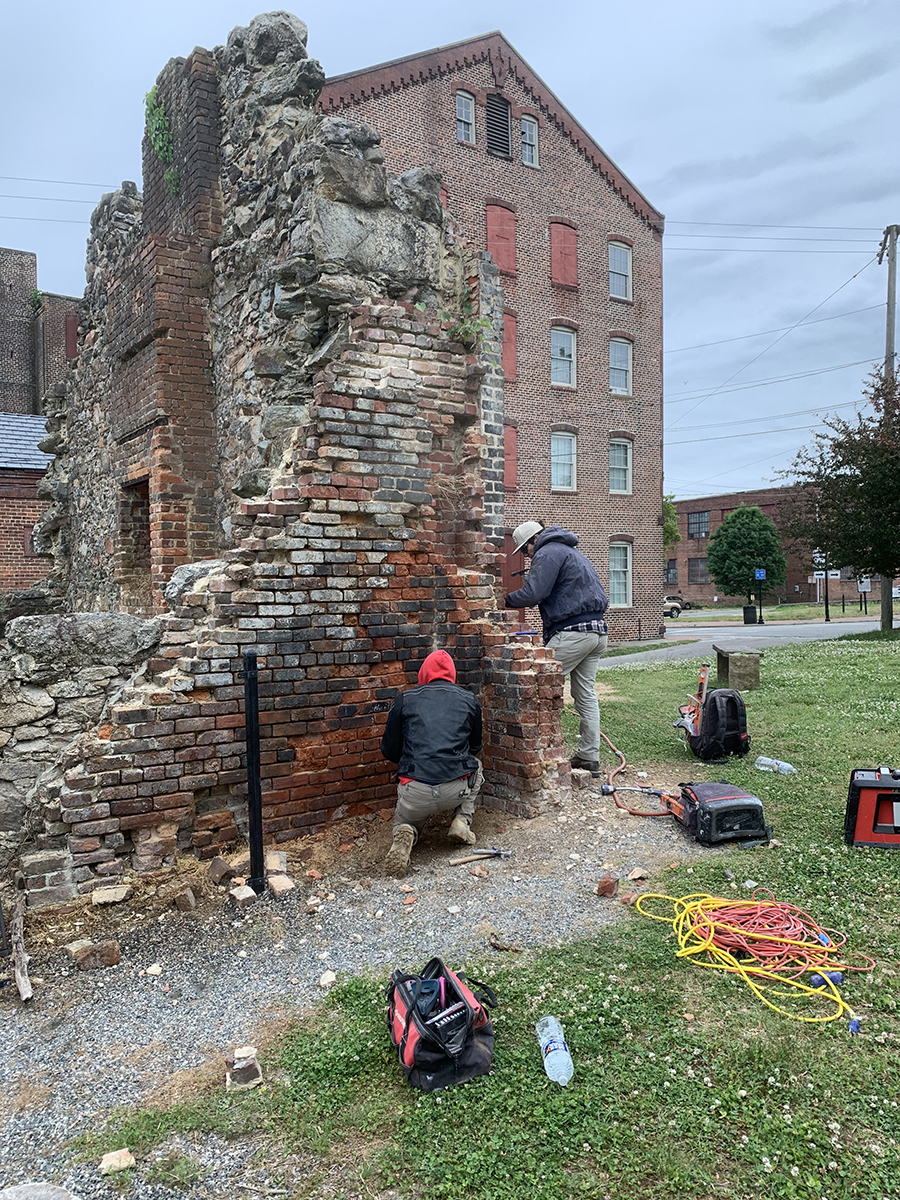
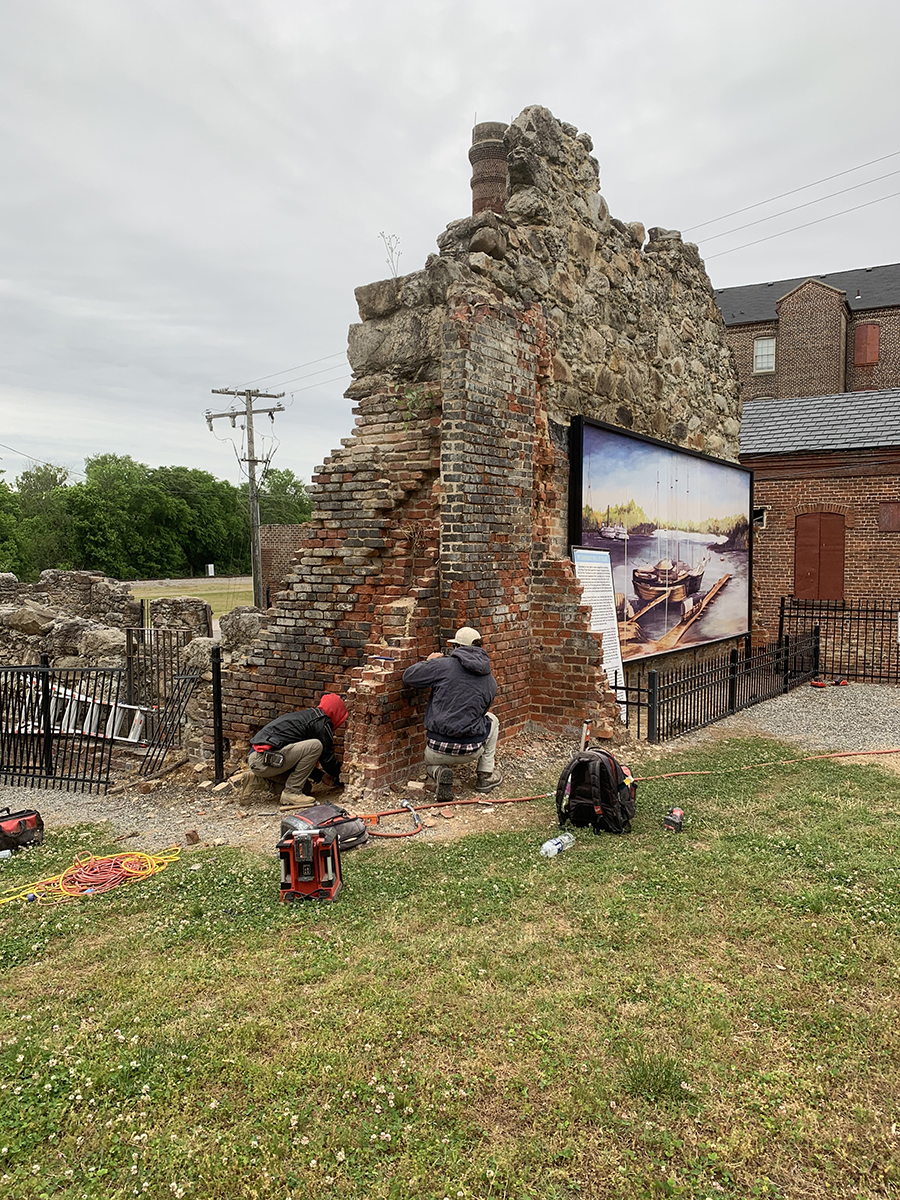
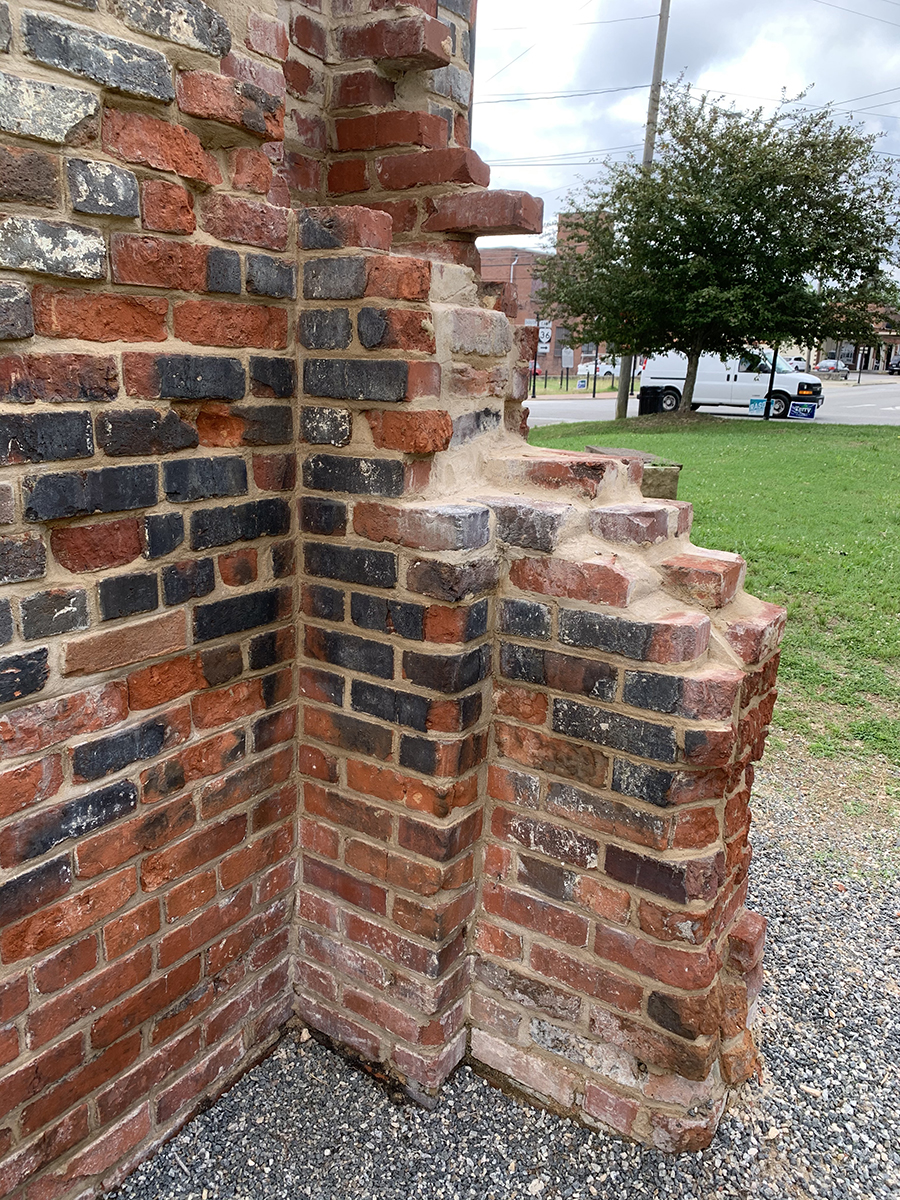
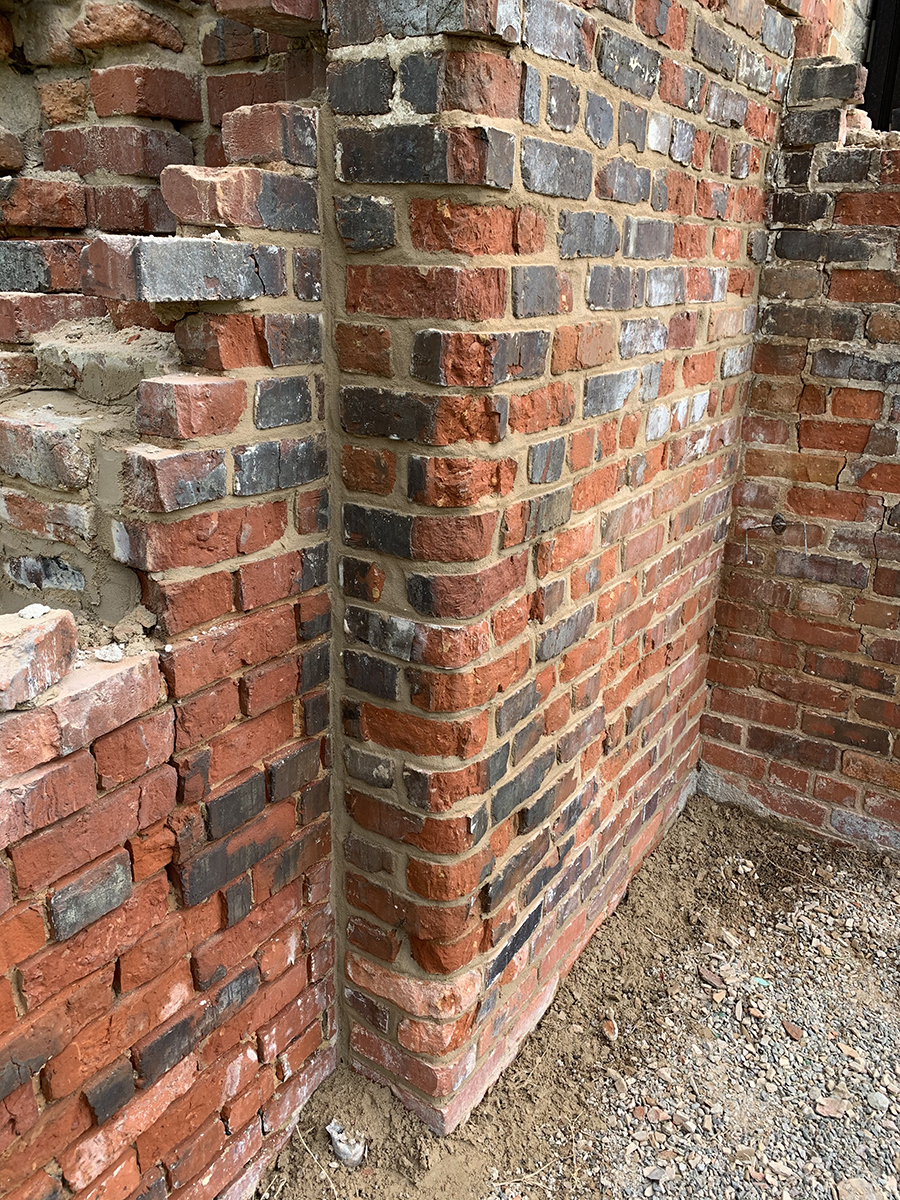
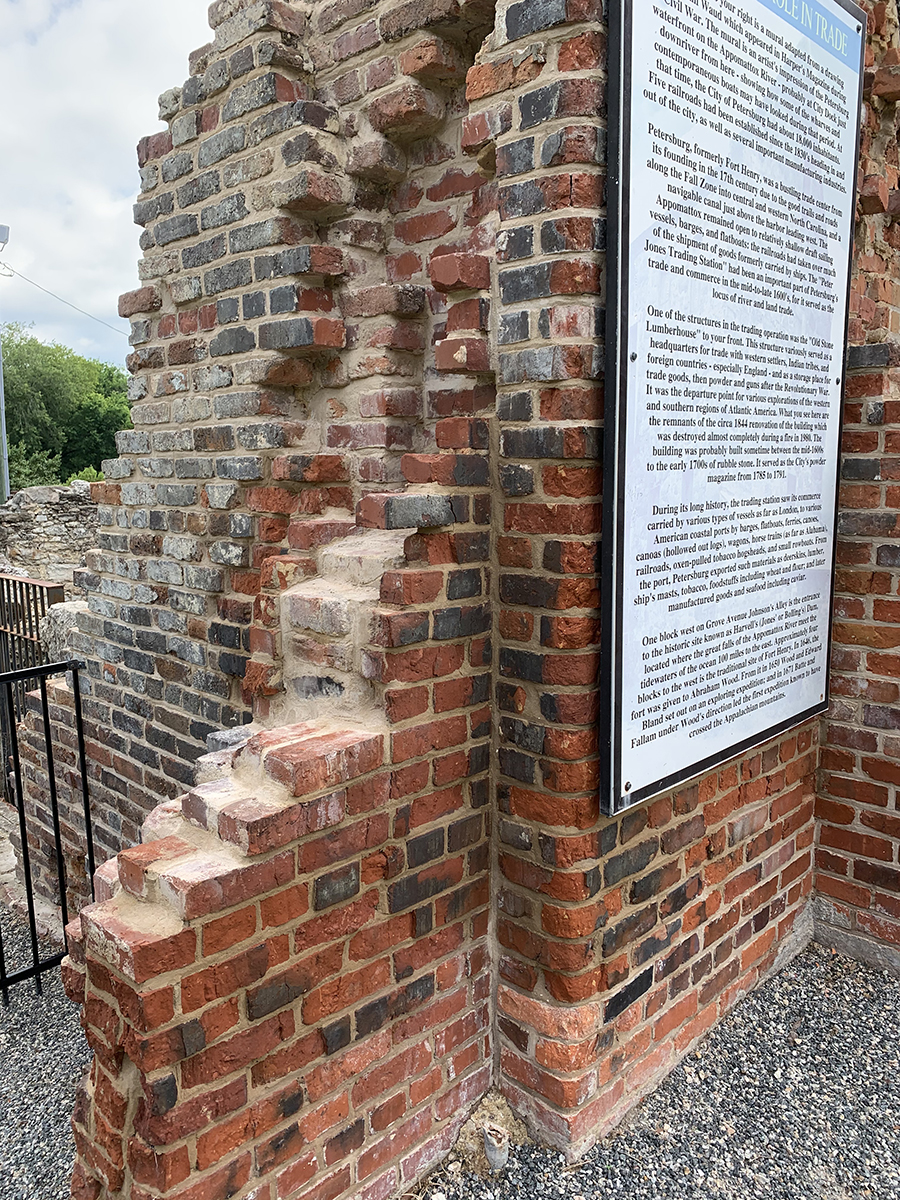
Traditionally this stone structure has been thought to date back to c. 1665 as part of the Peter Jones Trading Station, and therefore the oldest building in Petersburg. Also called the Stone Lumber House, this property was part of the original Fort Henry tract owned by Abraham Wood and Peter Jones in the 17th century. It is located at the most historic intersection in Petersburg, just south of the Appomattox River.
In response to the 1644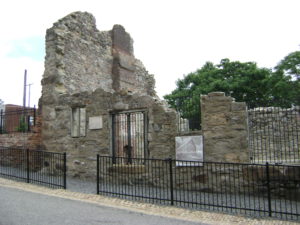 Indian massacre, the Virginia General Assembly in March 1646 directed that Fort Henry be built at the falls of the “Appomattocke River” to defend English settlers south of the James River. Shortly thereafter, the Indians and the Virginia colony signed a peace treaty. In October 1646, the Assembly declared Captain Abraham Wood caretaker of the fort. The current Peter Jones Trading Station site was within the tract of land occupied by the fort.
Indian massacre, the Virginia General Assembly in March 1646 directed that Fort Henry be built at the falls of the “Appomattocke River” to defend English settlers south of the James River. Shortly thereafter, the Indians and the Virginia colony signed a peace treaty. In October 1646, the Assembly declared Captain Abraham Wood caretaker of the fort. The current Peter Jones Trading Station site was within the tract of land occupied by the fort.
The first documentary evidence of the existence of this building is in the 1810 land tax book. In James Durell’s 1816 insurance policy, he insured a stone lumber house for $3,000. The dimensions of this building were 54 by 28 feet, the same dimensions as the current structure. In 1825, an extant document referred to this structure as the Old Magazine. It is entirely possible that this structure housed almost all of the gunpowder in the city from 1785-1791.
Between 1650 and 1674 four major explorations ended at Fort Henry, and three left from this site. Fort Henry was the southwest frontier in Virginia, and the last safe refuge for the English settlers in this area. The only places where pre-1674 English explorations began east of the Mississippi River were Jamestown, Boston, Charleston, Albany, the western Pennsylvania frontier, and Fort Henry (Petersburg). These explorations achieved many milestones, including the first English explorers to cross the Appalachian Mountains and the mid 18th century justification for the English claim to the Ohio Valley. These conflicting English and French claims led directly to the French and Indian War in North America from 1754-1763. The last of these four explorations, the James Needham and Gabriel Arthur expedition from 1673-1674, added immensely to the English knowledge of the geography and inhabitants of what became the Southeastern United States. Needham was shot and killed by an Indian west of Durham, NC and Gabriel Arthur was almost burned at the stake. The Tomahitan Indian King saved him, and Arthur accompanied him and his party on raids and diplomatic missions for 12 months. Arthur travelled 3300 miles (2500 miles on foot) touching or looking into every state east of the Mississippi River and south of the Ohio and Potomac Rivers except Mississippi. He therefore became the most widely travelled Englishman in 17th century North America.
By 1675, Abraham Wood and his son-in-law Peter Jones owned and operated a major trading operation from this site. Fort Henry “became the center of a vast Indian trade with the hinterland.” In the 1730s when William Byrd II planned the settlements at the falls of the James and Appomattox Rivers, he named the latter city Petersburg in honor of Peter Jones. The building on this site has served many purposes over the years including a trading station, magazine, prison during the Civil War, carpentry or cabinet shop, box factory and tobacco stemmery.
A fire in 1980 destroyed a considerable portion of the building, which increases the difficulty of authoritatively determining its date of construction. Approximately two-thirds of the stone walls and chimney with two fireplaces remain.
Sources:
- Entzminger, Contextual History of the Peter Jones Trading Station
- Briceland, Westward from Virginia
- Briceland, 17 Nov 12 Presentation